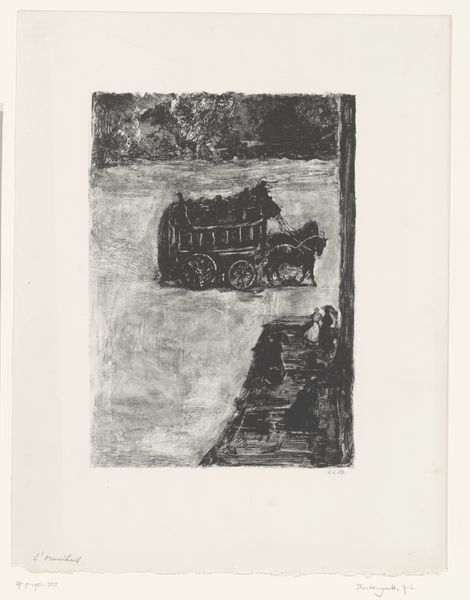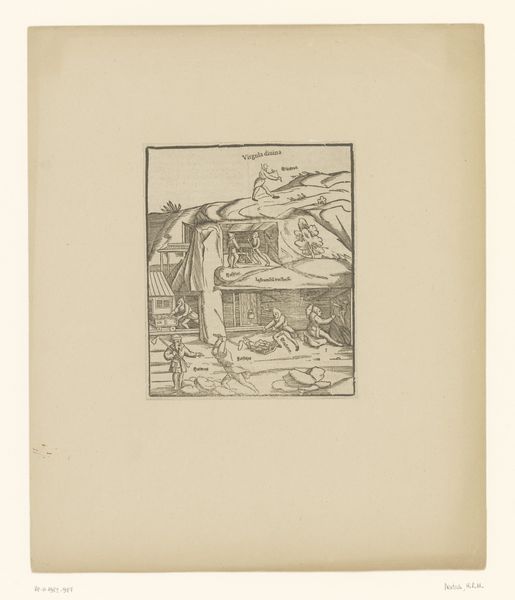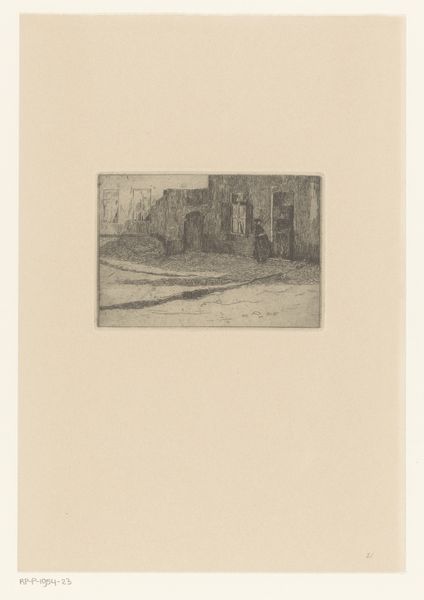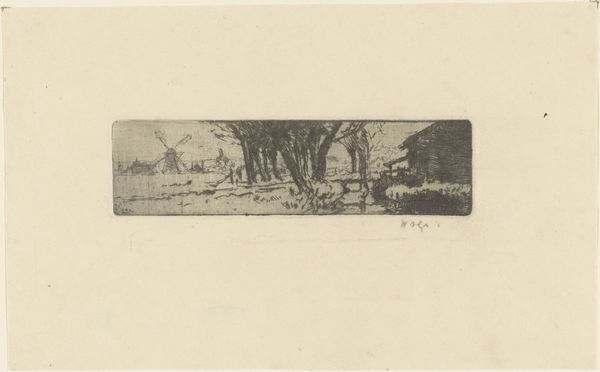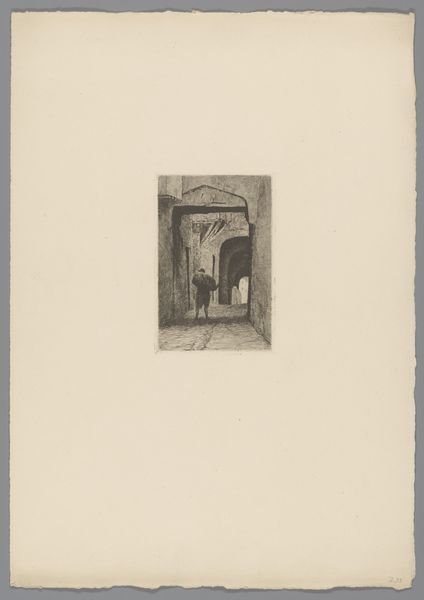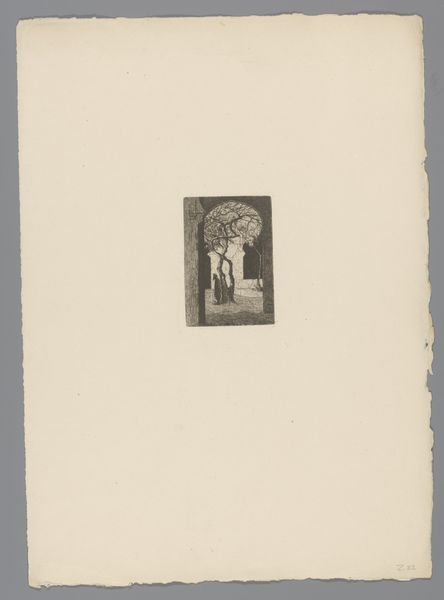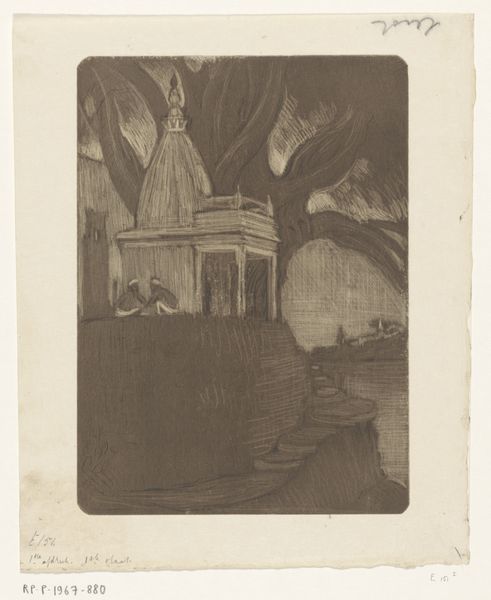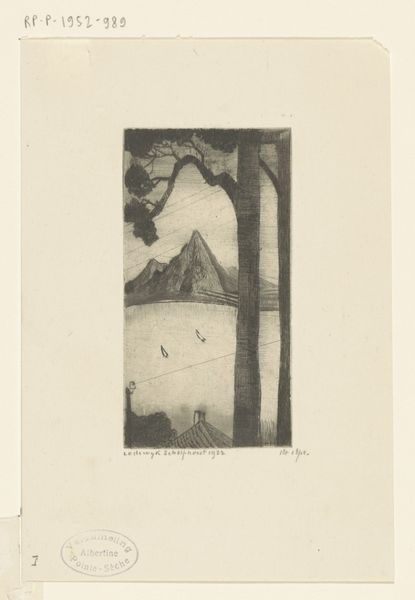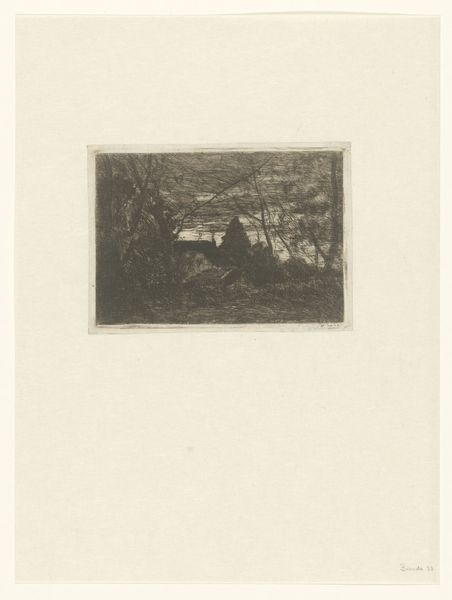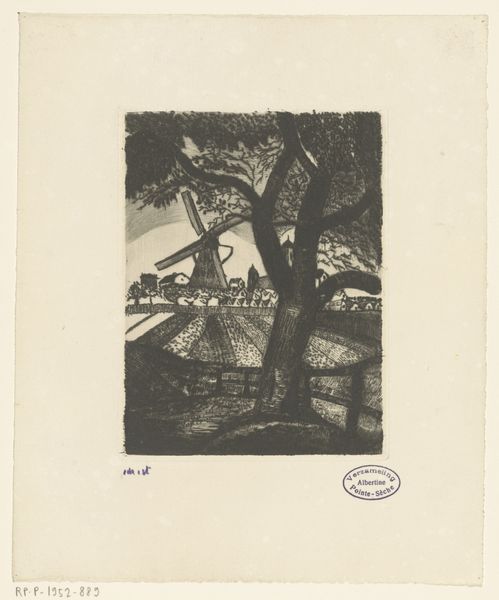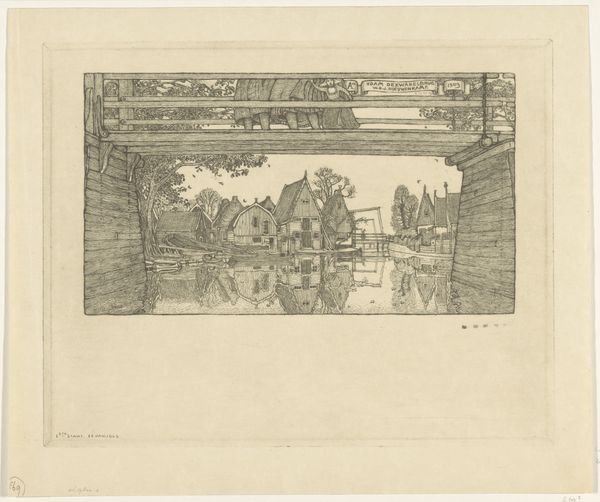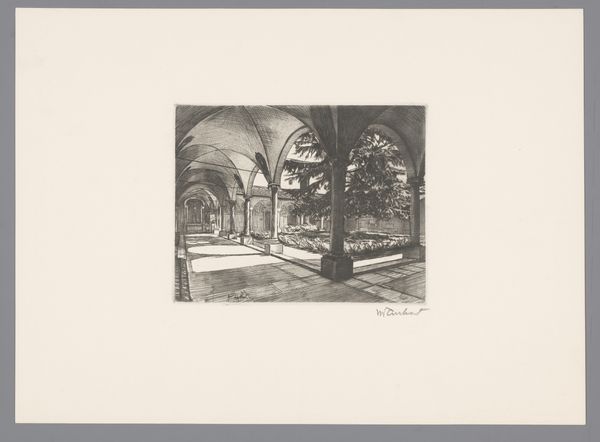
drawing, lithograph, print, paper
#
drawing
#
lithograph
# print
#
landscape
#
german-expressionism
#
paper
#
pencil drawing
#
expressionism
#
monochrome
Dimensions: 166 × 388 mm (image); 698 × 520 mm (sheet)
Copyright: Public Domain
Editor: Here we have Edvard Munch's lithograph from 1902, "The Garden in Front of Dr. Linde's House." The stark monochrome and grainy texture give it such an austere, almost haunted feel. What strikes you when you look at this print? Curator: Well, I immediately notice the medium. The lithographic process is key here. Munch's choice to use a printmaking technique highlights the means of production. He is intentionally creating multiples, opening access to art beyond the elite. Consider the socioeconomic implications: who could afford original paintings, and how does a print democratize art consumption? Editor: That's a fascinating point. It shifts the focus from the artist's unique hand to the accessibility of the image. Does the subject matter—the house and garden—also relate to this materialist perspective? Curator: Absolutely. The house, likely a symbol of bourgeois comfort, becomes a commodity reproduced and distributed. Munch, deeply involved with the avant-garde, likely understood the irony of portraying such a scene through a method that challenged the art market's exclusivity. How does the image's materiality interact with its status as "art"? Is it challenging conventional notions of high art by embracing reproducible media? Editor: I see what you mean. By focusing on the production, Munch is questioning not only who gets to *own* art, but also what we consider *worthy* of being art in the first place. The work almost makes you question if the aesthetic value hinges less on a singular artistic expression and more on the social and economic implications. Curator: Precisely. Considering the lithographic stone itself, the labor involved, and the distribution network expands our understanding of art beyond mere aesthetics. It forces us to confront the material realities and social context that shape our perception of beauty and value. It makes one wonder what is the nature of mass production and the changing culture. Editor: That’s given me a lot to consider. I definitely have a broader view of this work now, thanks! Curator: It has me also! It is through our discussion and interpretation that art truly thrives and comes to life for current society.
Comments
No comments
Be the first to comment and join the conversation on the ultimate creative platform.
